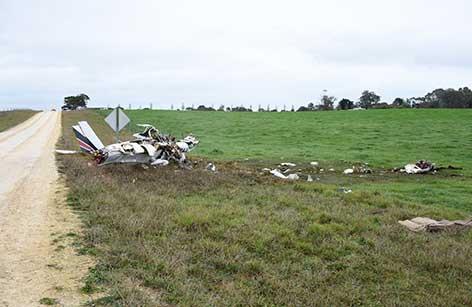The Australian Transport Safety Bureau stands behind its investigation that found a different and elevated risk for community service flights operated on behalf of Angel Flight Australia, compared to other private operations and commercial air transport.

The investigation into a collision with terrain of a SOCATA TB-10 Tobago, which had departed Mount Gambier to fly a young person and her mother to Adelaide for a medical appointment, looked beyond the accident flight to determine the broader systemic issues behind the provision of community service flights coordinated by Angel Flight.
“The Mount Gambier accident resulted in fatal injuries to the volunteer pilot and the two passengers, and was the second triple fatality accident involving an Angel Flight coordinated flight in seven years,” said ATSB Chief Commissioner Greg Hood.
“In both accidents, the pilots found themselves in instrument meteorological conditions without the necessary training, qualifications and experience to do so.”
Consequently, the ATSB’s investigation into the Mount Gambier accident sought to analyse the likelihood of a safety occurrence during an Angel Flight community service flight compared to other private operations. (Angel Flight Australia is a charity which matches volunteer private pilots flying private aircraft with regional and rural people needing transport for medical assistance.) Furthermore, the analysis was conducted to identify areas where Angel Flight organised flights are exposed to additional safety risks, regardless of attribution.
This analysis had not been undertaken before, as until recently, there was no way to differentiate community service flights from other private flights. Consequently, the ATSB undertook a data matching exercise to match Angel Flight records against the ATSB’s aviation occurrence database.
That analysis determined that between 2008 and 2017, 13,389 private flights carrying passengers were operated on behalf of Angel Flight, at a fatal accident rate of 1.5 fatal accidents per 10,000 flights, or more than seven times the rate (0.2 fatal accidents per 10,000 flights) for other private operations.
The ATSB focused on passenger carrying flights, as it was on these flights that Angel Flight passengers were exposed to risk (and was in line with the Minister for Infrastructure and Transport’s Statement of Expectations for the ATSB). Community service flights are also now defined by CASA as only those flights carrying passengers.
Further, the ATSB looked at flights, rather than flying hours, as the focus was on the likelihood a passenger would encounter a safety occurrence during a flight. Flights are commonly used when the data is available for operational safety analysis by the ATSB and others across the world, including the International Civil Aviation Organization.
It should be noted too that flying training flights, such as circuits, are not classed as private operations in the ATSB occurrence database.
Despite the focus on passenger carrying flights, with their occurrence rate more than four times higher than private operations, the ATSB’s investigation also showed that the non-passenger carrying flights repositioning to carry passengers for Angel Flight had an occurrence rate more than twice as high as other private operations. (The appendix to the ATSB investigation documents all safety occurrences for both passenger flights and the repositioning flights, and the results of both of these analyses.)
“The data analysis in the ATSB’s investigation was undertaken by experienced aviation safety data analysts and underwent extensive and robust peer review before publication,” Commissioner Hood said.
The ATSB’s data analysis also established that passenger carrying Angel Flight operations had a significantly higher rate of flight preparation and navigation occurrences when compared to other private operations.
These include visual flight rules pilots flying into instrument meteorological conditions, a known fatal accident pre-cursor, as was the case in the two Angel Flight fatal accidents.
The investigation established that Angel Flight coordinated flights were almost certainly exposed to different operational conditions, compared to other private flights, with the potential for pilots to feel perceived or self-imposed pressures to complete their flights.
The ATSB is continuing to monitor Angel Flight’s implementation of safety actions as advised by Angel Flight to reduce risk associated with the conduct of community service flights.
“Angel Flight Australia’s statement issued on Tuesday afternoon in response to our investigation report raises a number of issues already addressed by the final report,” Commissioner Hood said.
“I would like to once again re-iterate that the ATSB is supportive of the community service flight sector, however, based upon the analysis conducted, it is essential that the controls for risk are strengthened to prevent further accidents,” Commissioner Hood said.
“I stand by our report and the thorough and diligent investigation team who produced it.”
The ATSB is Australia’s national transport safety investigator for the aviation, rail and marine modes of transport, and is completely independent of regulators, government agencies and service providers.
Read the report: Collision with terrain involving SOCATA TB-10 Tobago, VH-YTM, near Mount Gambier Airport, South Australia, on 28 June 2017


